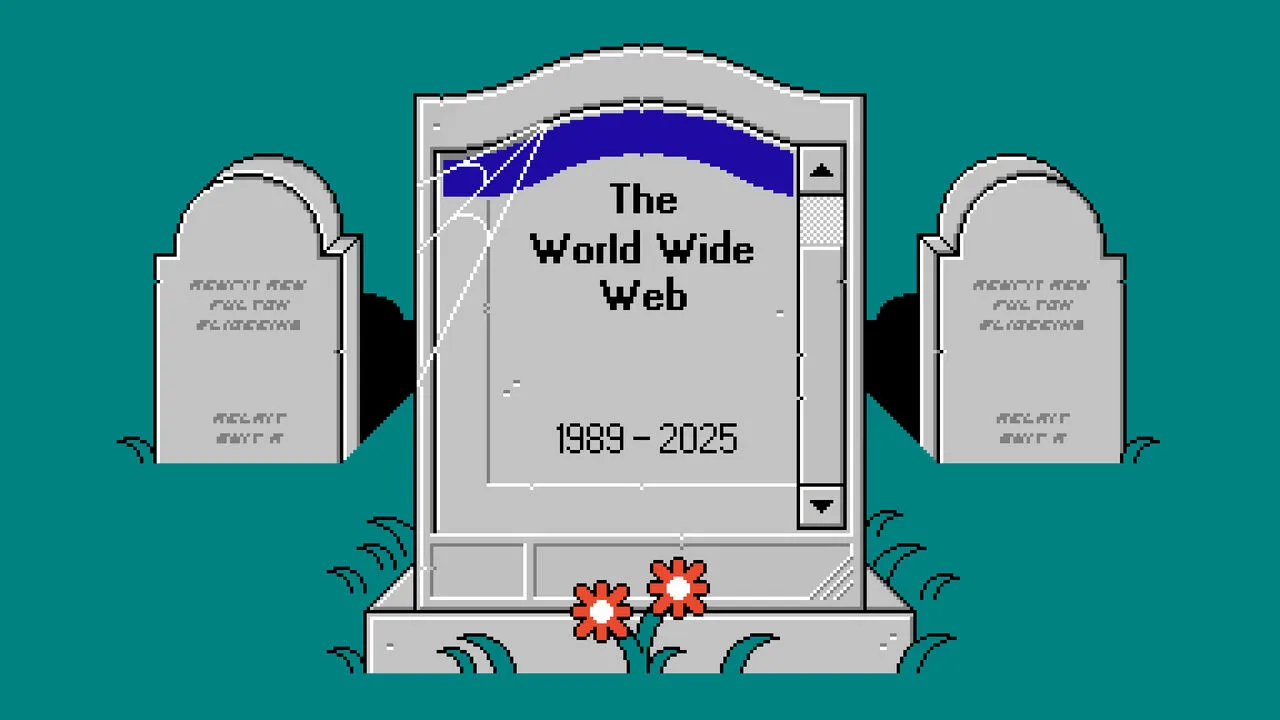
You open ChatGPT and ask it to “find me the best running shoes under €100.” Within seconds, it will compare models, check stock, read reviews, and complete the purchase, all without sending you once to the website of Nike.com or Zalando.be
That is the newest feature of ChatGPT, released a few days ago. OpenAI’s Instant Checkout now allows users to buy products directly within ChatGPT. The traditional path from search to click to website is being replaced by a single, frictionless interaction. At the same time, Google’s AI Overviews is rewriting the search experience, summarising content and offering answers without a single click. Neil Patel called it last year the “zero-click future.” I don’t think that’s an exaggeration, it’s a clear signal that the way people use the web is fundamentally changing. The website, once the centrepiece of every digital strategy, is slowly losing its spotlight.
For two decades, us digital marketers built everything around it. The website was where we showcased our brand, controlled our story, and collected data. Our campaigns, whether SEO, SEA, or social, were designed to drive people there. It was where conversion happened and where insights were collected. In many ways, it was the beating heart of digital marketing. But I believe AI is quietly rewriting that playbook. Users are no longer navigating the web, they’re delegating tasks. Their goal isn’t exploration anymore, it’s finding a solution. And if that solution can happen within a single AI interface, why leave it?
The entire user experience is reduced into one single exchange.
We're most likely entering a phase where websites won’t disappear, but most of them will become invisible. They’ll exist in the background, still necessary, but no longer visited. Their role will be to feed information into the AI ecosystem, not to host the user experience. In this model, the website stops being a destination and becomes a data source, a sort of warehouse of reliable facts that AI systems can interpret and trust. That’s a significant change.
And recent data supports this trend: according to Omnicom and Similarweb, global website traffic declined by about 3% year over year in 2024, while time spent on AI assistants and closed ecosystems like TikTok and ChatGPT continues to rise. The web remains essential, but its surface for exploration is shrinking. Users are finding, comparing, and even purchasing elsewhere, forcing brands to rethink what their websites are really for.
We have spent years designing for humans, perfecting customer journeys, building architectures, and fine-tuning messages. But AI doesn’t care about our menus or the brand colour we use to be as eye-catchy as possible. It cares about accuracy, authority, and consistency. The brands that will thrive in this new world will be the ones whose data is understood, not just whose design is admired. As Forbes recently put it, “AI will not destroy the web — but it will demote it. The new digital presence is your data, not your domain.” I completely agree. The battleground is shifting from traffic generation to data integrity.
It’s important, though, to recognise that not all businesses will be affected in the same way. For content-based businesses, like news outlets or publishers, the threat is existential. Their model depends on visibility and engagement on their own platforms. When AI summarises or rewrites their content, it extracts value without attribution. I understand why they’re pushing for regulation. They own the rights to their work and deserve credit, citation, and compensation if AI uses it. Their survival depends on protecting that connection with their audience.
For product-based businesses, I believe the situation is different. If you sell products or services, AI doesn’t erase your value, it changes how customers reach you. Instead of visiting your site, users will rely on assistants that know your offer, reputation, and availability. In this world, success depends on how well your brand is represented within AI ecosystems. Structured data, authentic reviews, and trustworthy signals become your new storefront. You don’t fight AI, you feed it.
This shift has major implications for marketing. As AI is involved in more and more of the user journey, success will no longer be measured by traffic or clicks. The real indicator will be trust. Not only the emotional trust of consumers, but the operational trust of algorithms. AI systems need to understand who you are, believe the accuracy of your data, and feel confident enough to recommend you. Visibility will depend less on how many people you attract, and more on how confidently you are included in AI-generated answers. The marketer’s role is evolving: it’s no longer about driving visits, but about building credibility at the structural level.
That shift is already visible. A restaurant that keeps its opening hours, menus, and reviews consistent across Google My Business, TripAdvisor, and its own site is more likely to appear in AI assistants’ local suggestions. A retailer that maintains complete product data (with clear descriptions, transparent pricing, and verifiable stock information) has a higher chance of being recommended in a “best option” prompt in ChatGPT.
To achieve that, businesses will need to move beyond website-centric thinking and become ecosystem-ready. The assistant, not the homepage, is becoming the interface. Brands must ensure their data is structured, their products and reviews accessible, and their information machine-readable. For example, a hotel chain exposing live availability via API to AI agents may secure direct bookings within an assistant, bypassing comparison sites altogether. Presence in this new environment is not negotiated through design, but through interoperability. It’s not about building bigger websites, but smarter systems — connected, structured, and trustworthy enough to power AI-driven interactions.
But as the infrastructure evolves, so does user behaviour. People are no longer browsing, comparing, and evaluating across multiple tabs; they’re delegating. When AI can summarise reviews, compare prices, and complete transactions, the traditional funnel of awareness, consideration, and conversion collapses into one single moment of intent. That doesn’t make marketing less human; it makes it more focused. Every brand interaction must now deliver instant recognition and credibility, because the time between discovery and decision has virtually disappeared.
The brands that will thrive in this new landscape are those able to express their essence, their values, proof points, and unique edge, as clear, verifiable signals that both humans and machines can interpret. Emotion, design, and storytelling won’t disappear, but they’ll move offsite. They’ll show up in the way customers describe you in reviews, in the tone and consistency of your social presence, and in the creators and communities that echo your message. The “vibe” of a brand will no longer be defined by a homepage hero image, but by the collective sentiment and credibility you build across the web.
That said, this new AI-driven environment is not the only landscape. Websites will continue to play a vital role in building emotion and trust, and will have their place alongside the stores and other owned channels. They just might not be the first stop anymore. Connection will happen across a wider ecosystem: part human, part algorithmic.
And for creative agencies, this evolution doesn’t diminish creativity; it repositions it. Brand campaigns will remain essential, but they’ll rely less on the vehicle of a website and more on impactful, immersive formats that build cultural memory: powerful films, bold outdoor activations, engaging social storytelling, and collaborative experiences. Creativity will continue to shape perception, but it will do so across touchpoints that AI can amplify, reference, and learn from.
Conclusion
So, will AI make your business website irrelevant? Not entirely — but it might make it secondary. The website will shift from being the centre of your digital presence to one component in a much broader ecosystem. Its purpose will evolve: less about hosting user journeys, more about feeding trustworthy data, proving credibility, and anchoring your brand identity.
The brands that succeed won’t abandon their websites — they’ll repurpose them. They’ll treat them as reliable sources, not destinations. What will truly matter is whether your brand is understood, trusted, and represented — across AI systems, platforms, and the signals they learn from.
AI isn’t making websites obsolete, it’s changing what they’re for. And in that shift lies the real opportunity: to design marketing that’s not just visited, but chosen.
